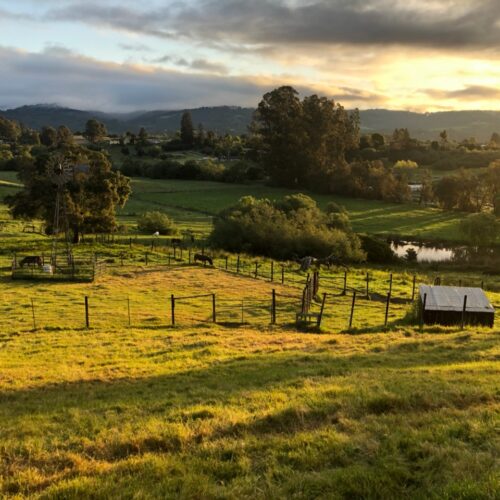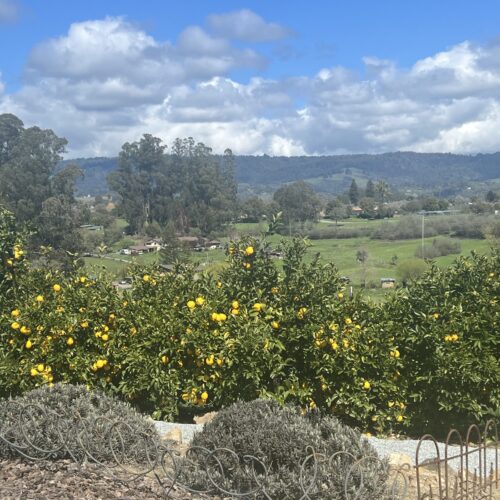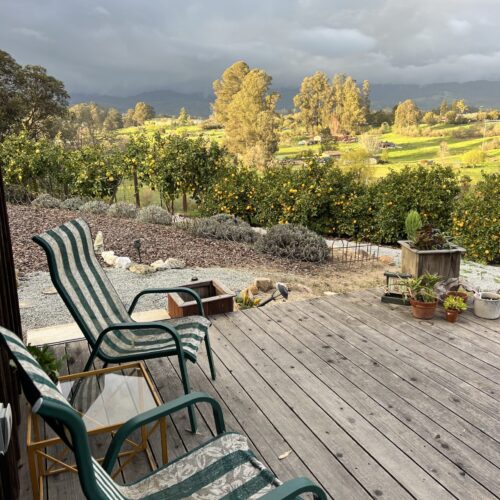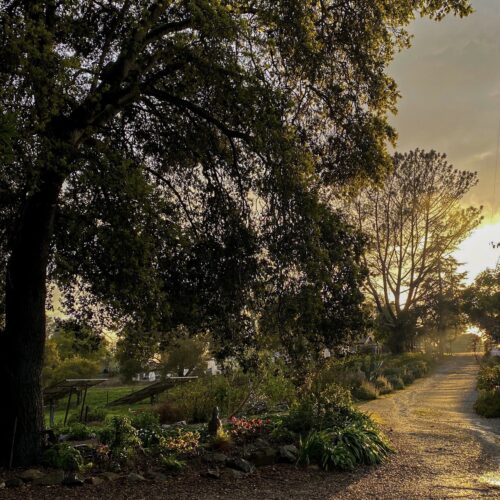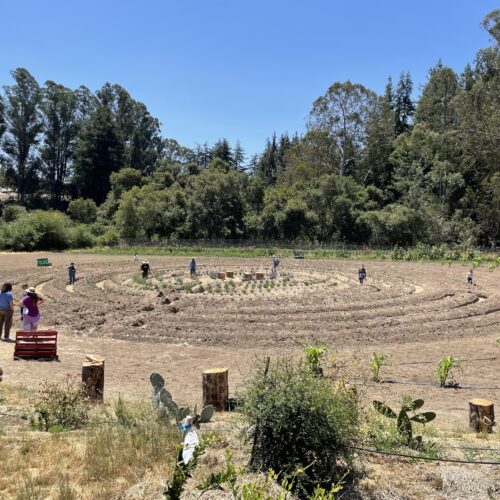
Mariquita means “Ladybug” in Spanish, and our farm is a welcoming place for the Ladybugs to “fly home” to. Our little 20-acre homestead lies along Pinto Creek, in Corralitos. We have left 15 acres open as pasture for our donkeys to wander through and as riparian habitat for the wild creatures. The turtles share their pond with ducks, geese, cranes, and egrets, and the hawks and owls enjoy the forest.
Over our five acres of cultivated ground we maintain a diverse mosaic of ornamental and edible crops. Diversity makes magic. By planting out a mix of short-term annual crops with biennial and perennial plants we create an inviting environment for beneficial insects and animals. As we finish the harvest cycle in any one section of the garden, there are always standing crops for our beneficial insect allies to move into, so that they aren’t displaced, but can lay their eggs and create new generations. Songbirds and Hummers can find refuge in the hedgerows of roses, cacti, and sage.
On the south-facing slope we have citrus groves and flower beds that embrace a 110-foot diameter lavender labyrinth. On one side of the lavender labyrinth we plant the “Holy Trinity” of corn, squash, and beans in a milpa inspired vegetable garden, but we spice up the traditional mix with a range of herbs and seasonal flowers. On the other side of the labyrinth we plant a garden of ornamental and sacramental Marigolds. Each season we rotate these crops around the labyrinth after planting each plot in a winter cover crop. On the north side of the farm we have beds of perennial beans mixed with annual crops and we maintain a little perennial meadow for the songbirds. Crop diversity, crop rotation and cover cropping are the principles that keep our farm moving forward through the cycle of the seasons. Visit the gardens during one of our events and join our mailing list to get information on our farm tours throughout the season.


